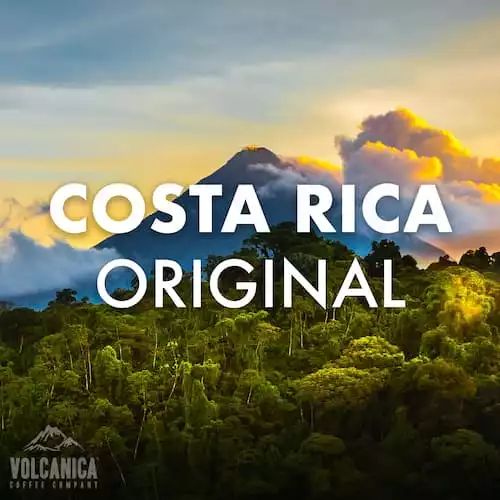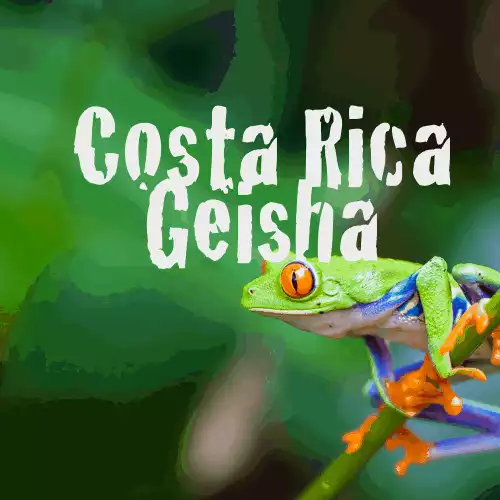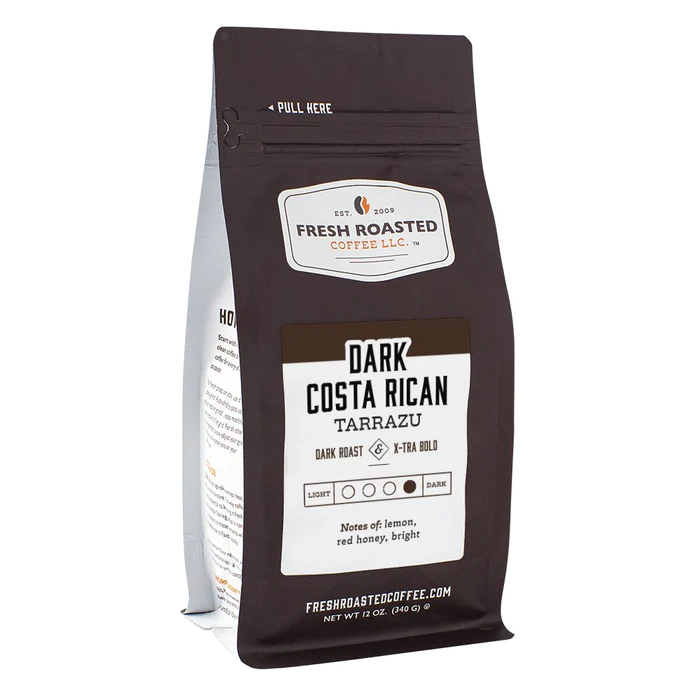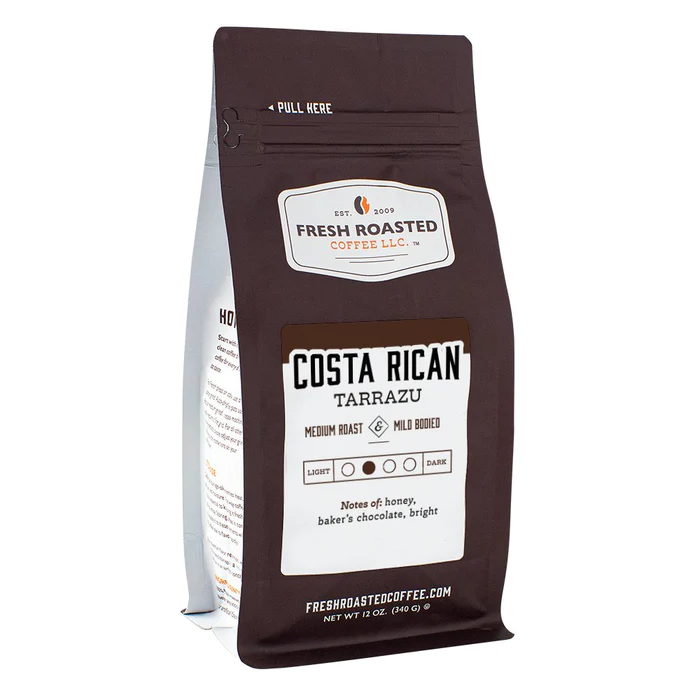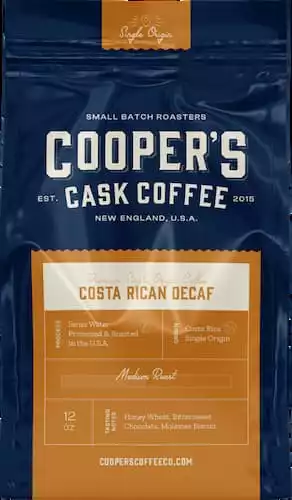Best Costa Rican Coffee 2024: Barista Tested
As a former barista, I’ve sipped my way around the world of coffee. So trust me when I tell you: where coffee is grown has a huge impact on the final taste of the brew.
If you want to explore the correlation between origin and flavor, I recommend starting your journey in Costa Rica. This Central American country has been producing quality beans since the 1800s.
Ready to start sipping? Check out my guide to the best Costa Rican coffee. I’ve brewed and reviewed the top Costa Rican coffee brands to help you find a coffee bean you love.
Best Costa Rican Coffee Brands
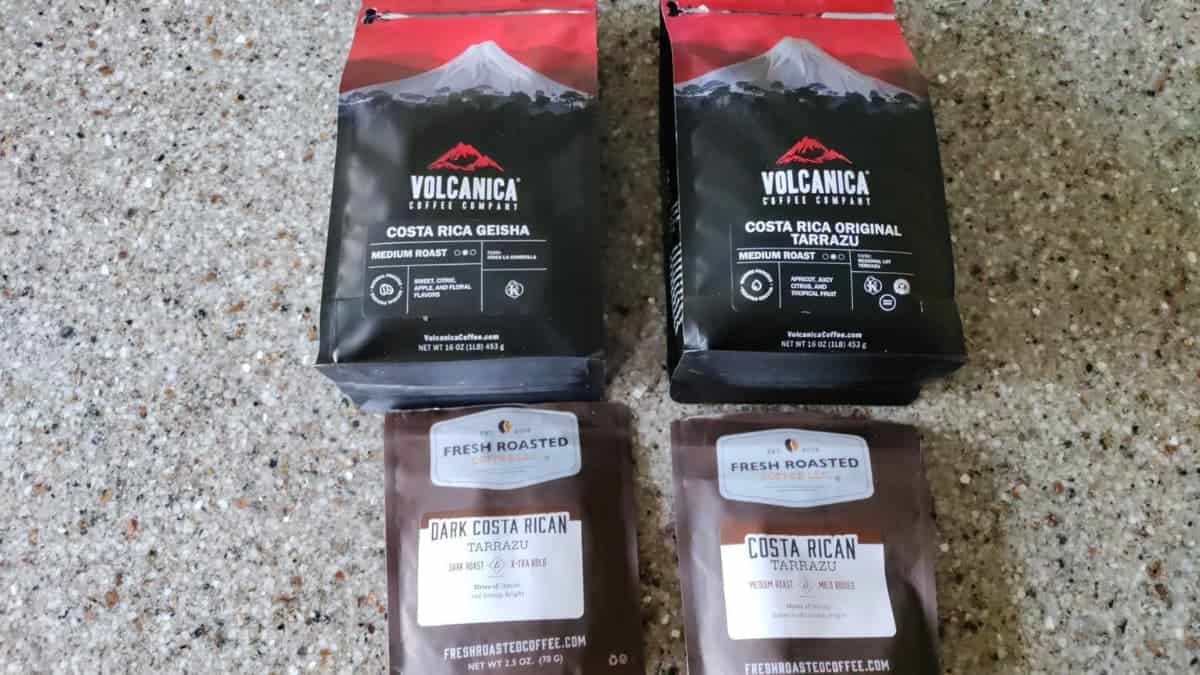
1. Costa Rican Tarrazu | Volcanica
Volcanica offers one of the best Costa Rican coffees on the market: the Costa Rican Tarrazu. This premium coffee bean has a unique blue color and higher levels of caffeine.
- Fruity
- Freshly Roasted
- Perfect For Espresso & Hand Brewing
Origin
Unsurprisingly, Volcanica’s Costa Rican Tarrazu beans come from the Tarrazu valley. These arabica beans grow at high altitudes in volcanic soil. They are rainforest-alliance and kosher certified.
Roast
Costa Rican Tarrazu from Volcanica is a medium roast coffee. (You can also purchase the beans as dark roast or decaf.) With a medium roast, the roasting process begins to inform the brew flavor. But you still get a balance of sum floral flavors (though less bright than you would in a light roast).
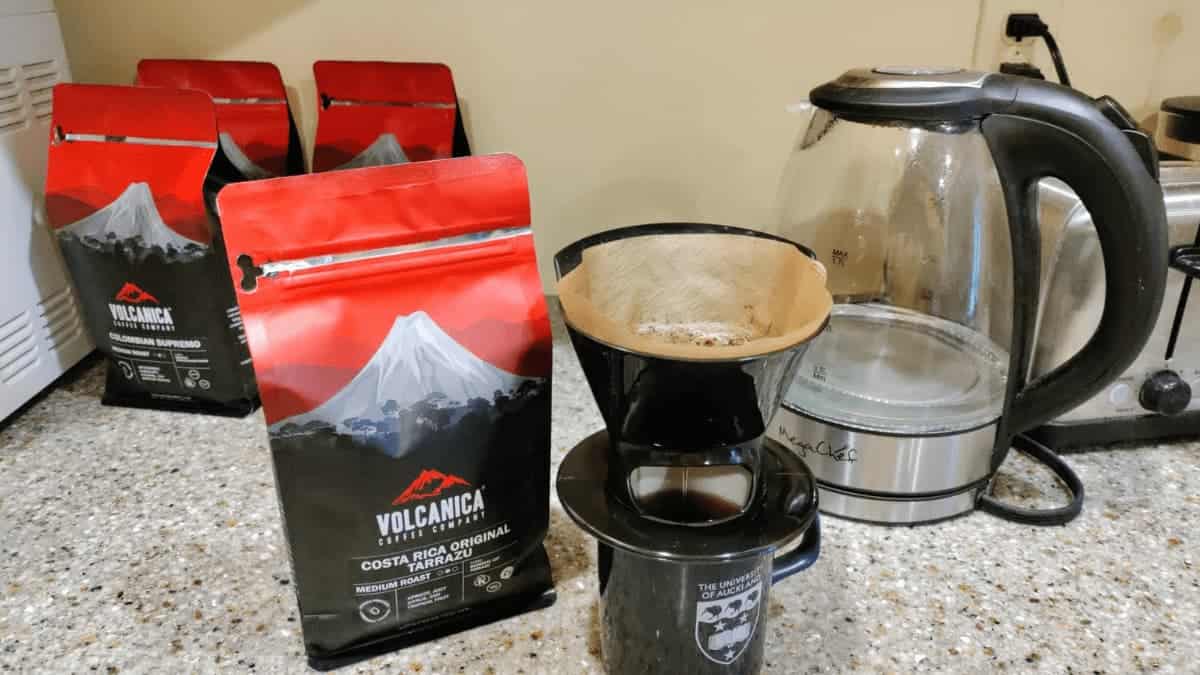
Process Method
This whole-bean coffee from Volcanica undergoes a washed process. During this wet process, the beans go through four main steps: sorting, pulping, fermentation, and drying.
Taste and Brewing Method
These Costa Rican coffee beans offer juicy citrus, apricot, and tropical fruit flavors. I sampled this coffee in several different ways. But my personal favorite beverage for this medium roast coffee was a cappuccino.
The beans grow in a volcanic region, lending them a bit of a darker taste. So I found that they worked well as an alternative to an espresso roast.
2. Costa Rica Geisha | Volcanica
This whole-bean coffee uses Geisha beans, one of the highest-quality coffee beans on the market.
Geisha coffee trees grow long and slender beans. When brewed, these beans produce extraordinary flavors and aromas.
Geisha coffee contains 30% less caffeine than regular arabica beans. This could be a good or a bad thing, depending on how you look at it!
- Perfect For Hand Brew Methods
- Fruity & Complex
- Roasted To Order
Origin
The rare Geisha coffee beans originated from Gori Gesha Forest in Ethiopia. Today you can find them also find them in Tanzania, Columbia, Panama, Peru, and Costa Rica. Volcanica sources these Geisha beans from Finca La Candeilla in Tarrazu.
Roast
This Costa Rica Geisha from Volcanica Coffee is a medium roast whole-bean coffee. This roast maintains a crisp flavor and a mild acidity.
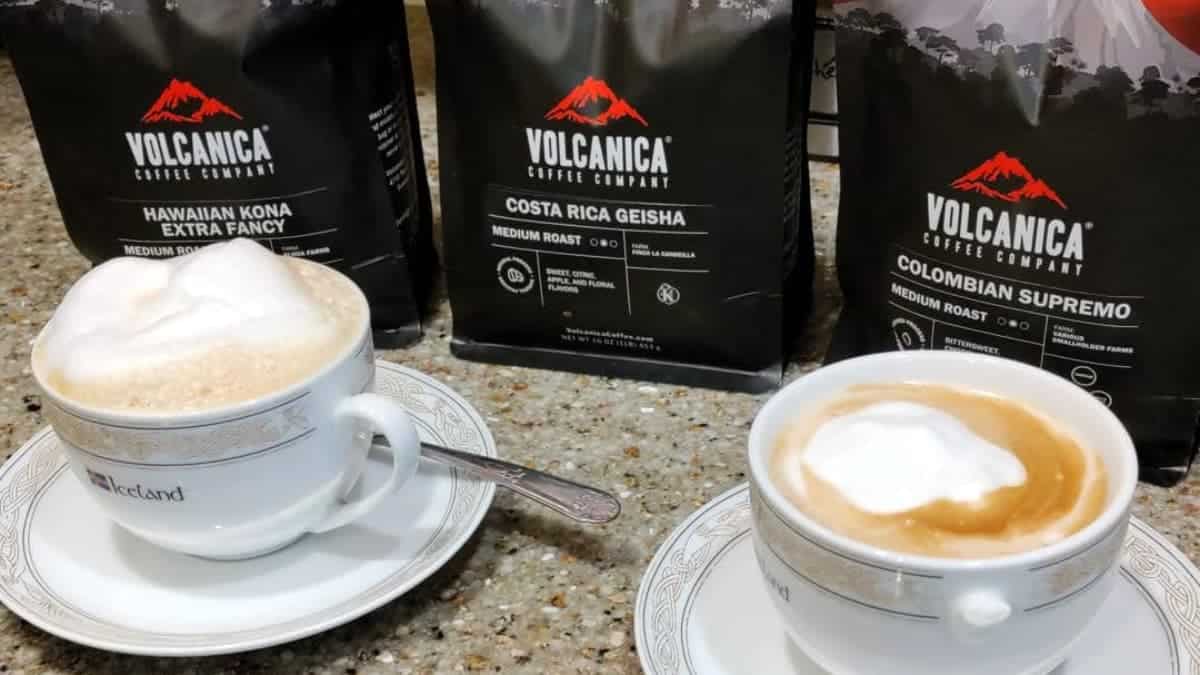
Process Method
Volcanica’s Costa Rica Geisha beans undergo natural processing. This traditional processing method preserves the beans’ sweeter and more floral flavors.
Taste and Brewing Method
This coffee features a combination of soft, delicate flavor profiles with complex aromas. I tasted citric, floral, and apple flavors. You might also notice hints of molasses, flowering grass, vegetal cocoa, lavender, and pipe tobacco.
I found this coffee tasted best as a black French Press. Holding the milk let me pick up the delicate flavors of the brew.
3. Dark Costa Rican Tarrazu | FRC
Fresh Roasted Coffee is another one of the top Costa Rica coffee brands. My favorite Costa Rican coffee from FRC is the bold-flavored Dark Costa Rican Tarrazu.
With the Dark Costa Rican Tarrazu, FRC delivers high-quality beans in every batch. Moreover, FRC uses environmentally-friendly coffee roasters to do so.
Origin
Dark Costa Rican Tarrazu are single-origin beans. The namesake region offers dense volcanic soil and ideal growing conditions. The result is a cup boasting rich body and full flavors.
Roast
Dark Costa Rican Tarrazu are dark-roasted beans. This roast lends strong, bold-tasting notes with subtle nutty, caramel, and chocolate hints. Because of the longer roast time, these beans lose more moisture. The result is a full-bodied brew that can feel heavy on your taste buds.
Process Method
Dark Costa Rican Tarrazu undergoes washed processing with drum drying.
Taste and Brewing Method
These beans offer sweet and bright flavors with hints of citrus — surprising features for a dark roast. (I also noted the more characteristic light caramel and dark chocolate notes.) This variant is super dark, so I found it worked well as an espresso.
4. Costa Rican Coffee | FRC
Fresh Roasted Coffee also produces a delicious bag of beans appropriately called Costa Rican coffee! These are essentially their medium roasted Tarrazu beans.
Origin
FRC sources its Costa Rican Coffee from the “Land of the Saints” in Tarrazu. This region gives farmers the insurance and assistance needed to produce this coffee. FRC relies on traditional co-ops and micro mills to produce these high-quality beans.
Roast
This Costa Rican Coffee is made of medium roast beans with only small amounts of oil on their surfaces. FRC also offers this roast in single-serve coffee pods rather than whole-bean coffee. (Nitrogen insufflation keeps the pods fresh for extended periods.)
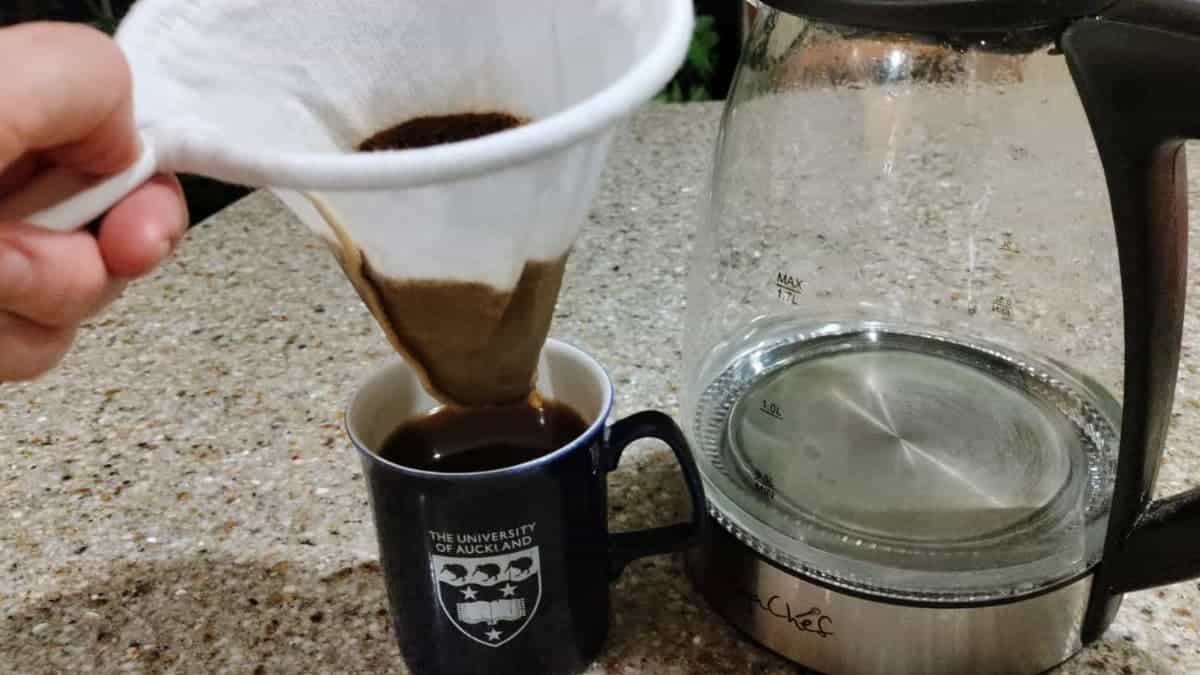
Process Method
FRC’s Costa Rican Coffee undergoes a washed process. The beans are then patio sun-dried.
Taste and Brewing Method
FRC’s Costa Rican Coffee features mildness in both body and flavor profiles. I’d compare this smooth sipping experience to drinking a cup of tea.
The brew is bright and light on the palate, with hints of chocolate and sweet honey. I found this coffee worked well as a pourover since it wasn’t as dark as some of the other coffees on this list.
5. Costa Rican Decaf | Cooper’s Cask
Last up is a blend from another one of the best Costa Rican coffee brands out there, Cooper’s Cask. This particular coffee is decaf, so it’s a nice pick for those who can’t have too much caffeine.
Origin
Costa Rican Decaf from Cooper’s Cask is a single-origin bag of beans. The result is thus consistent: smooth and vibrant aromatics with full body flavor.
Roast
This Costa Rican Decaf is a medium roast. These coffee beans give you more balanced coffee and sweet flavors.
Process Method
Beans from Costa Rican Decaf undergo a wet processing method, followed by air-drying. Washed and dried, the beans are decaffeinated through the Swiss water decaffeination process.
SWP decaffeinates the beans while retaining their original tasting profiles. Plus, it leaves much less caffeine than traditional decaf methods.
Taste and Brewing Method
Cooper’s Cask Costa Rican Decaf combines sweet and vibrant flavor profiles. I noticed bittersweet chocolate, honey wheat, and molasses biscuit.
Of all the beans on this list, this bag from Cooper’s Cask was the most versatile. I tried it using a pourover, French Press, and a regular drip machine and found them all very drinkable.
The Costa Rica Coffee Buying Guide
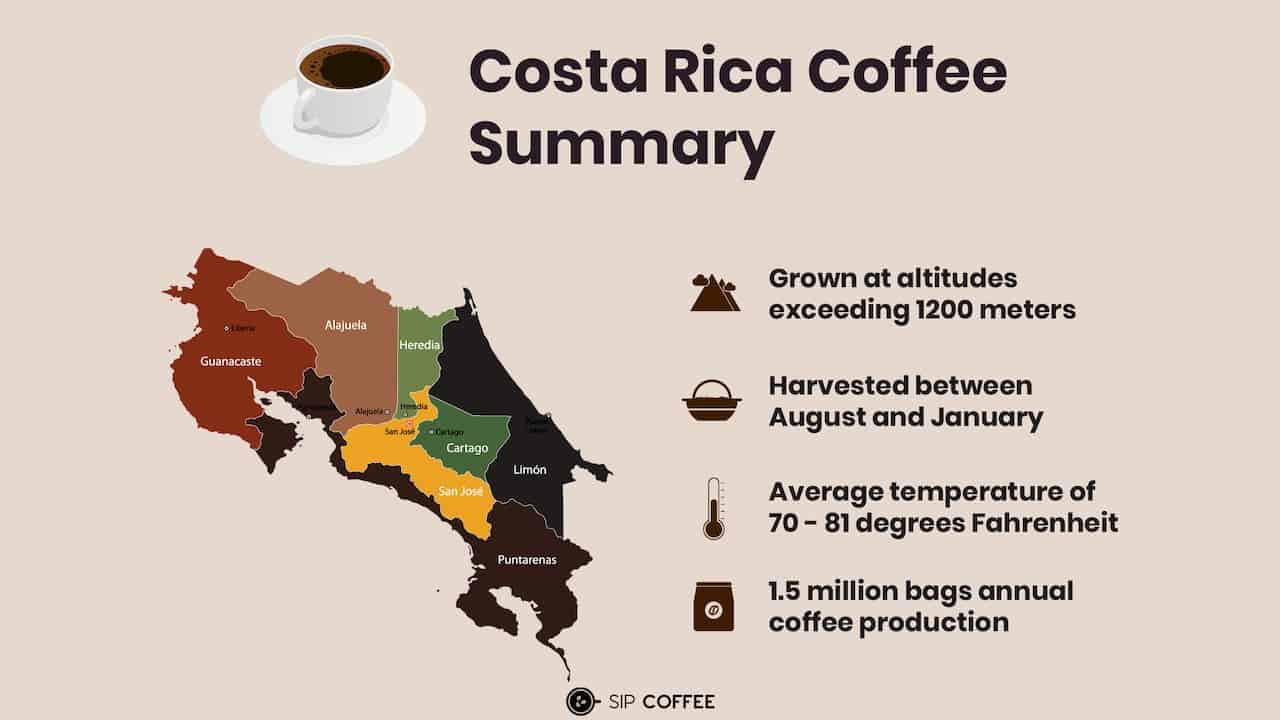
Costa Rican Coffee Regions
Costa Rica produces coffee out of eight main regions. If that seems overwhelming, don’t worry. Here, I’ll profile the beans from the most famous coffee production areas: Tarrazu, Poas, Brunca, Tres Rios, and Naranjo.
Tarrazu
Tarrazu is Costa Rica’s largest and most famous coffee region.
- Location: province of San Jose
- Elevation: 1,200-1,900 meters above sea level
- Climate: seven months of rain followed by a dry summer
- Soil: volcanic
- Common Flavors: chocolate, warm honey, dates, grassy hay, malt
These conditions combine to grow some of the highest-quality coffee beans in the country, offering a unique blend of acidity and body.
Poas
The central part of Poas features a 2,708-high active stratovolcano. Throughout the region, harsh conditions result in high-quality hard beans.
- Location: Central Costa Rica
- Elevation: 1,200-1,600 meters above sea level
- Climate: heavy rainfall, intense temperature changes, harsh micro-climates
- Soil: volcanic, mineral-rich
- Common Flavors: floral, fruity, with chocolate and earthy undertones
When brewed, Poas coffee beans offer hearty cups with light acidity.
Brunca
Brunca produces two types of coffee beans: from Pérez Zeledón and Coto Brus. These aromatic beans tend to be hard and have a light acidity.
- Location: south of Costa Rica
- Elevation: 800-1,700 meters above sea level
- Climate: humid, tropical
- Soil: mountainous
- Common Flavors: complex citrus notes varying from mild to very sweet
Coffee beans from Brunca are best for drinkers who prefer their cups to have sour notes.
Tres Rios
Tres Rios is another mountainous region, famously home to the Irazu Volcano.
- Location: Central Costa Rica
- Elevation: 1,200-1,650 meters above sea level
- Climate: two distinct seasons (wet and dry)
- Soil: volcanic
- Common Flavors: sweet chocolate, rich fruit
Physical hardness and closed fissures characterize Tres Rios coffee beans. These qualities give your coffee intense aromas, full-bodied flavor profiles, and prominent aftertaste.
Naranjo
Naranjo coffee beans have won the Cup of Excellence four times in the past several years.
- Location: Costa Rica’s West Valley
- Elevation: 1,200-1,700 meters above sea level
- Climate: cool year-round
- Soil: nutrient-rich
- Common Flavors: citrus, coca, nuts, honey
These arabica beans combine bright citrus notes with creamy tones of chocolate.
Local Processing Methods
Most Costa Rica coffee brands use one of three methods for processing coffee: dry, wet, or semi-washed.
Dry Process
- Also called “natural process”
- Oldest and simplest processing method
- Farmers sun-dry fresh coffee cherries
- Results in sweeter, more complex coffee with a chalky aftertaste
Wet Process
- Also called “washed process”
- Most common processing method
- Farmers separate beans from pulp, organize beans by size and weight
- Beans then ferment in water tanks for up to two days before drying
- Results in more balanced and consistent flavor profiles
Semi-Washed Process
- Also called “honey process”
- Rare processing method
- Farmers separate pulp and beans, but part of the bean’s mucilage remains
- Beans sun-dry for about two weeks
- Results in a brew somewhere between dry and wet process
Brew Like a Local: The Chorreador
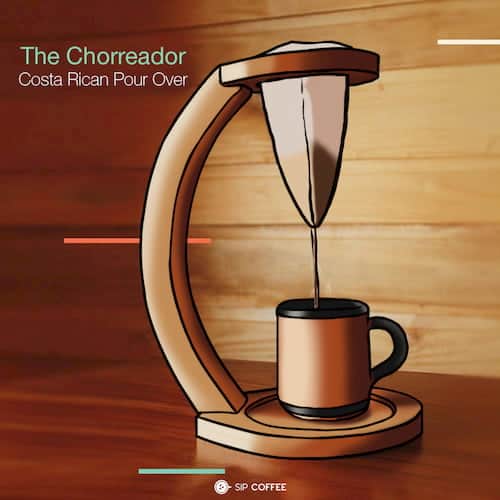
I used French Press and pourover brew methods to test these Costa Rican coffees. But if you really want to get into the Costa Rican spirit, you’ve got to know about the chorreador.
The chorreador is a simple and traditional way to brew coffee in Costa Rica. Central and South Americans have used this brewing device for over 200 years.
It consists of a wooden stand for holding the coffee pot or cup and a sock (bolsita) that remains open by a rim or a wire.
To brew one cup of coffee using the chorreador:
- Place your mug or a pot below the sock.
- Pour a tablespoon of ground Costa Rican Beans into the bolsita.
- Pour four ounces of boiling water onto the ground beans.
- Wait for the coffee to drip through the fabric and fill your mug.
Presto! You’ve got a tasty cup of authentic Costa Rican coffee.
The Final Verdict: Best Costa Rican Coffee
Want to sample one of the best Costa Rican coffees? I personally recommend the Volcanica Costa Rican Tarrazu. This coffee brand exudes perfectly-balanced flavors in every cup. Plus, its fruity aftertaste sweetens the coffee’s bitterness.
If you’re after a decaf then I’d recommend Cooper’s Cask. This pick is much milder, making it an approachable cup for beginner drinkers. Plus, it’s near caffeine free. So it works well for evening cups of coffee.
As you’re trying Costa Rican beans, pay attention to the processing method and growing region. When in doubt, I suggest sourcing washed coffee beans from Tarrazu.

